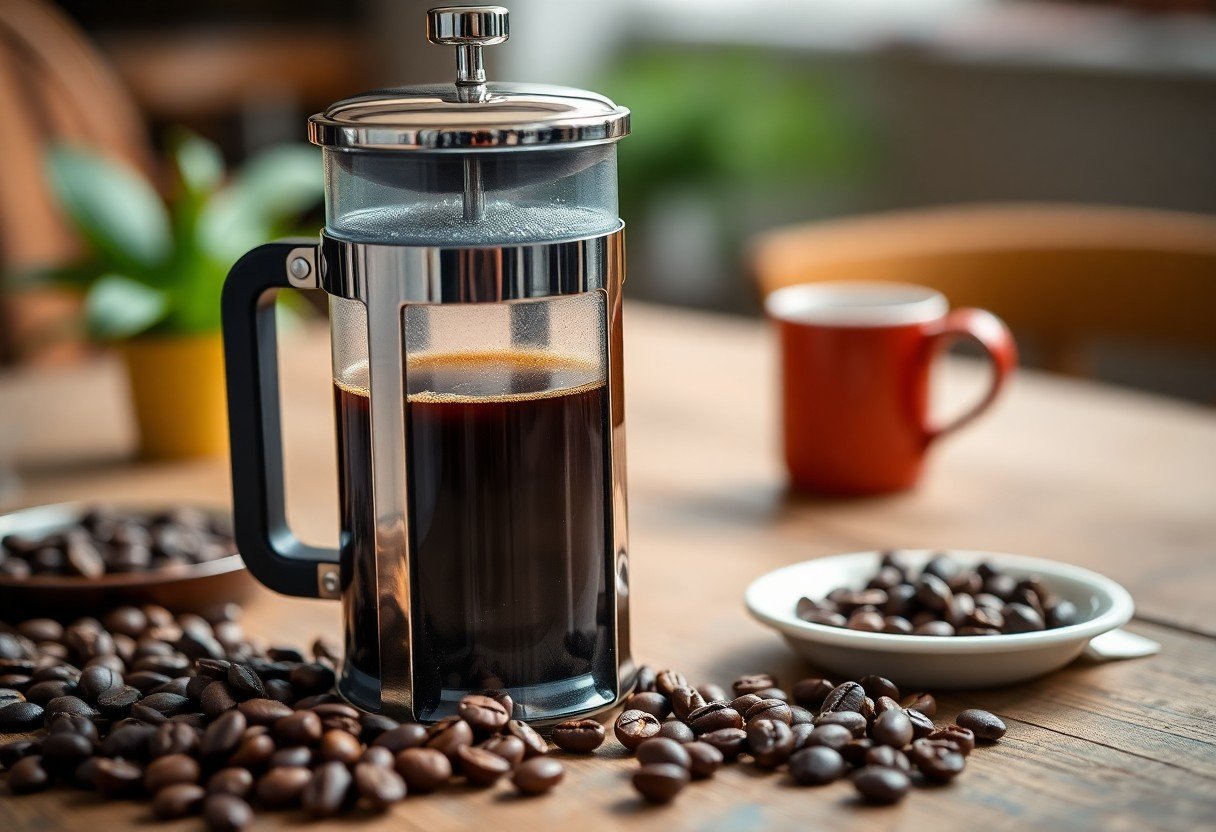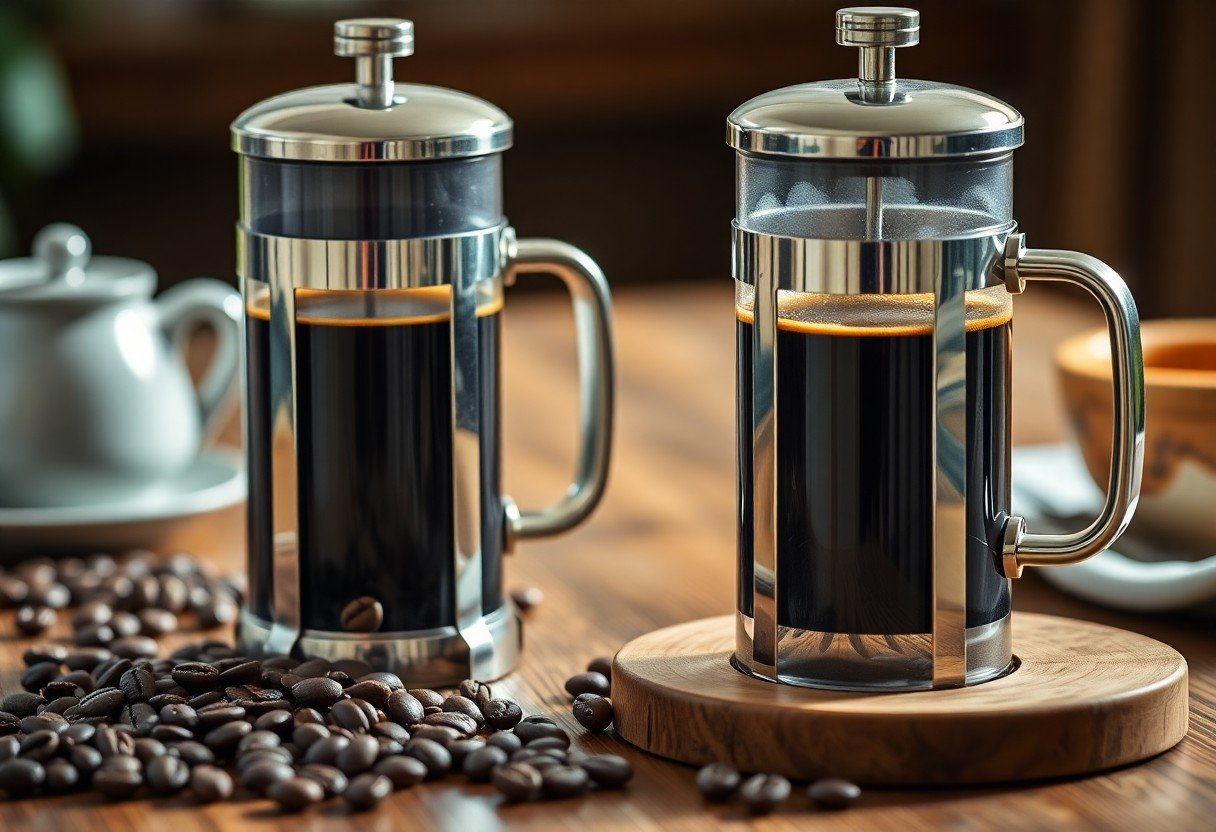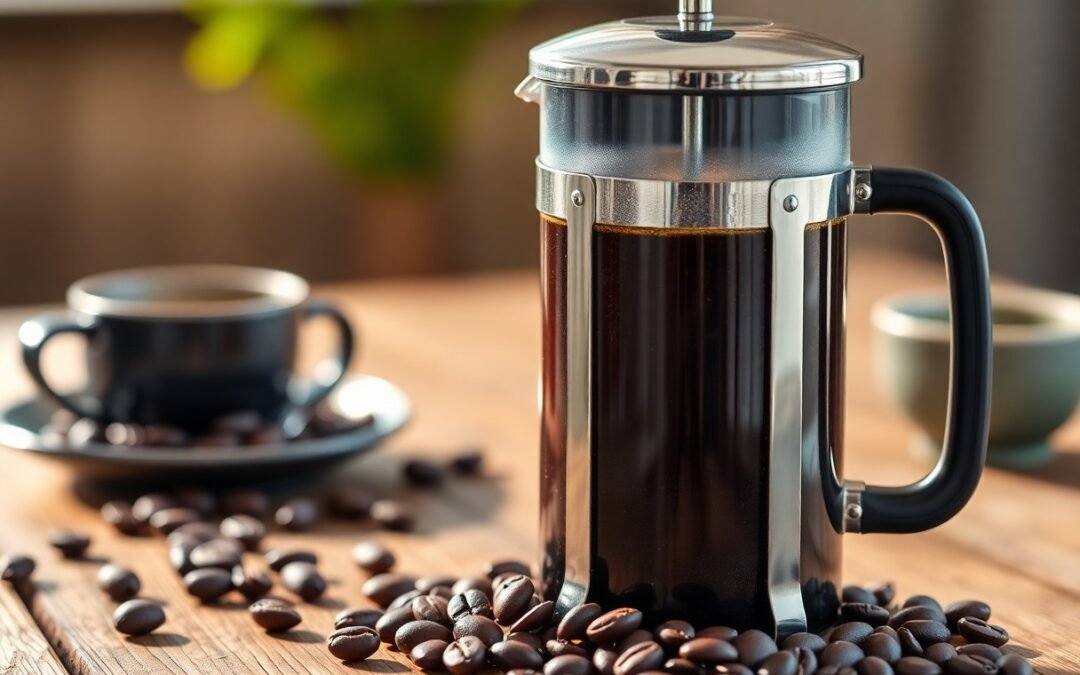You can elevate your coffee experience by mastering the art of brewing rich French press coffee. This guide will walk you through each step, ensuring you extract the full flavor and aroma from your beans. With just a few simple tools and some quality coffee grounds, you’ll be on your way to enjoying a delicious cup that rivals your favorite café. Let’s probe the importants of French press brewing and turn your mornings into a delightful ritual.
Choosing the Right Beans: The Foundation of Flavor
Your coffee’s flavor is intrinsically tied to the beans you choose. Selecting high-quality coffee beans sets the foundation for a rich and satisfying brew. Natural factors such as the region where the beans are grown, the processing methods used, and the time since roasting all contribute to the overall flavor profile. By opting for premium beans, you not only enhance your coffee experience but also support sustainable practices within the coffee industry.
Sourcing High-Quality Coffee
Finding high-quality coffee beans can be an adventure in itself. Look for beans that are sourced from reputable farms or cooperatives, often indicated by certifications like Fair Trade or organic. Visiting local roasteries can also yield fresh, flavorful options while allowing you to engage with knowledgeable staff who can guide your selection. The aroma and color of the beans can further indicate their freshness and quality, so don’t hesitate to explore a variety of offerings.
Understanding Roast Levels and Their Impact
The roast level significantly affects the taste of your coffee, with each level bringing out different flavor notes and characteristics. Light roasts tend to have bright acidity and fruity flavors, while medium roasts balance sweetness and body, showcasing a diverse array of flavors. Dark roasts, on the other hand, deliver deeper, bolder flavors with a pronounced bitterness. Exploring these profiles will help you discover your personal preference and allow you to tailor your French press coffee to your taste buds.
Light roasts retain more of the original bean’s natural flavors and acidity, making them vibrant and fruity, often characterized by notes of citrus or floral undertones. In contrast, medium roasts achieve a balance, where the toasted flavors begin to emerge alongside sweetness, resulting in a smooth cup that suits many palates. Dark roasts bring out smoky and chocolatey characteristics due to longer roasting times, which can overshadow the bean’s origin flavors. Understanding these nuances can guide your choice, ensuring that each brewed cup aligns with your flavor preferences, providing a deeply satisfying coffee experience.
Mastering the Grind: The Key to Extraction
The grind size of your coffee beans significantly impacts the flavor and strength of your brew. For French press coffee, achieving the right consistency is vital, as it affects solubility and extraction time. A coarser grind allows for an optimal flow of water and ensures that the grounds do not clog the filter, leading to a balanced extraction. Take note that variations in grind size can result in either under-extraction, leaving your coffee sour, or over-extraction, resulting in bitterness. Aim for a perfect balance to unleash the full potential of your favorite beans.
The Art of Achieving the Perfect Coarseness
Finding the ideal coarseness for your French press can be a delightful journey of experimentation. Generally, you want your grind to resemble coarse sea salt. This texture promotes even extraction and minimizes sludge in your cup. Start with a standard ratio of 1:15 coffee to water, adjusting the grind size based on your taste preferences. As you taste-test different grinds, you’ll discover how the subtle variations in texture can unveil unique characteristics in your coffee.
Equipment Options: Burr vs. Blade Grinders
Your choice of grinder plays a significant role in achieving the desired grind size. Burr grinders offer a more consistent and uniform grind, necessary for brewing with precision, while blade grinders can produce uneven particles, affecting extraction. Investing in a quality burr grinder may initially seem daunting, but the impact on your French press coffee quality is well worth it. For the best results, aim for a grinder that allows you to adjust the settings and provides a reliable turn of the blade or burr.
Burr grinders come in two varieties: flat and conical. Flat burrs produce a more uniform grind, suitable for those who savor intricate flavor profiles, while conical burrs are more forgiving and less prone to overheating, making them ideal for everyday use. Blade grinders, on the other hand, tend to chop beans inconsistently, producing a mix of fine and large particles, which can complicate brewing with the French press. If you prefer a reliable cup of rich coffee without the hassle of varying grind sizes, opting for a burr grinder is an necessary step in your coffee journey.
Precision Brewing: The French Press Method
Focusing on precision can elevate your French press coffee experience to new heights. Understanding the key elements—water temperature, brewing time, and ratio—ensures that you fully extract the coffee’s rich flavors while avoiding bitterness. Each component plays a role in achieving that perfect cup, making thorough attention to detail necessary for serious coffee enthusiasts.
Water Temperature: Finding the Sweet Spot
The optimal water temperature for French press coffee typically ranges between 195°F and 205°F. Using water that’s too hot can over-extract and result in bitterness, whereas water that’s too cool fails to extract enough flavor. Here’s a quick guide:
Brewing Time: Timing Your Extraction for Rich Flavor
The brewing time for French press coffee typically ranges from 4 to 4.5 minutes for a rich and flavorful cup. This timing allows the water to fully permeate the grounds, extracting the coffee’s inherent oils and flavors without the risk of over-extraction. Altering this duration can lead to dramatically different results; for example, steeping for only 3 minutes may yield a weaker brew, while extending beyond 5 minutes might introduce a harsh bitterness.
Adjusting your brewing time allows you to customize flavors according to your palate. Experimenting with a short 3-minute brew might yield bright, fruity notes, while a 5-minute steeping session draws out deeper, darker flavors, leading to a comforting, full-bodied cup. Finding your ideal balance can transform your coffee ritual into a delightful journey of taste exploration.

Personalizing Your Cup: Adjusting Strength and Flavor
Personalizing your French press coffee begins with adjusting the strength and flavor based on your preferences. You can easily tweak the intensity by altering the coffee-to-water ratio, experimenting with brewing times, or changing your grind size. For a bolder cup, increase the amount of coffee or let it steep longer. If you enjoy a milder brew, use less coffee or reduce the steeping time. For a comprehensive guide on finding the perfect balance, check out the How to Make French Press Coffee | Brew Guide.
Ratios That Work: Coffee to Water Calculations
The ideal coffee-to-water ratio often sits around 1:15 to 1:17, meaning for every gram of coffee, use 15 to 17 grams of water. Start with this guideline, but feel free to adjust based on your taste preference. A stronger brew may benefit from a 1:12 ratio, while a lighter cup may require 1:20. Use a kitchen scale for accuracy, ensuring each cup is tailored to your liking.
Experimenting with Additives: Enhancing Your Brew
Enhance your French press coffee further by experimenting with various additives. Milk, cream, or non-dairy alternatives can add a rich texture and smoothness. A sprinkle of cinnamon or a dash of vanilla extract introduces warm, aromatic flavors that transform your morning routine. For a delightful twist, try flavored syrups or even a spoonful of cocoa powder for a mocha experience.
Exploring different additives opens up vast possibilities for flavor enhancement. Popular choices like nutmeg, cardamom, or even a hint of chili pepper can elevate your coffee experience. If you’re feeling adventurous, consider drizzling some maple syrup or sweetened condensed milk for a unique yet comforting profile. Think about balancing your flavor preferences and textures to create a coffee that feels personal, ensuring every brew is a delightful ritual with each sip inviting exploration and new experiences.

Common Pitfalls and Troubleshooting Tips
Even the most experienced coffee enthusiasts can run into challenges while brewing their perfect cup. To help you avoid some common hiccups, consider these tips:
- Using the wrong grind size
- Not measuring your coffee and water accurately
- Using water that’s too hot or too cold
- Poor steeping times
- Not cleaning your press regularly
Any of these factors can lead to a subpar French press experience, so addressing them diligently is key.
Trouble Brewing? Identifying Common Mistakes
Strong flavors or bitterness in your brew often arise from simple missteps. If your coffee tastes overly harsh, assess your grind size; a coarser grind usually works best for French press brewing. Measuring your coffee and water precisely ensures a balanced ratio, typically 1:15 for coffee to water. Additionally, steeping for the correct duration—around four minutes—is crucial to avoid over-extraction.
Perfecting Your Technique: Consistency is Key
Building your French press routine emphasizes replicable techniques for consistently delightful brews. You want to prioritize using the same water temperature, generally between 195°F to 205°F, and stick to your preferred coffee-to-water ratio. Variations can lead to altering both flavor and strength, so documenting your process is advisable. This allows adjustments and fine-tuning over time.
Achieving that perfect cup of French press coffee is about honing your method and understanding what works best for your taste buds. Whether it’s experimenting with different coffee bean origins or tweaking your steeping time, consistency plays a significant role. Detailed records of your brewing sessions can help you retain your winning formula while enabling you to explore new flavors and aromas. By staying attentive to these elements, you’ll transform trial and error into a seamless crafting experience.
Conclusion
Drawing together the elements of brewing rich French press coffee, you now have the imperative steps to elevate your coffee experience. Start with freshly ground coffee and high-quality water to create a full-bodied flavor. Pay attention to the steeping time and the pressure applied during the plunge for optimal extraction. Enjoy the process and savor each cup, knowing that you’ve crafted a beverage that caters to your taste. With these tips in hand, you can relish in the satisfaction of mastering French press coffee at home.
Q: What type of coffee beans should I use for brewing French press coffee?
A: For brewing French press coffee, it’s best to use coarsely ground beans to avoid a gritty texture in your final cup. Look for high-quality, freshly roasted beans that suit your taste preferences, whether that’s a single origin, a blend, or a specific roast profile like medium or dark. Experimenting with different beans can enhance your overall coffee experience.
Q: How long should I steep the coffee in the French press?
A: Steeping time is important for achieving the desired flavor profile. Typically, a steeping time of 4 to 5 minutes is recommended for French press coffee. If you prefer a stronger cup, you might extend this time slightly, but be cautious as steeping too long can lead to bitterness. Timing your steeping can significantly impact the richness and depth of your coffee.
Q: What is the best water temperature to use when brewing French press coffee?
A: The optimal water temperature for brewing French press coffee is between 195°F to 205°F (90°C to 96°C). Using water that is too hot can scorch the coffee and lead to an unpleasant taste, while water that is too cool won’t extract the flavors effectively. If you don’t have a thermometer, bringing the water to a boil and letting it sit for about 30 seconds will generally reach the right temperature.

